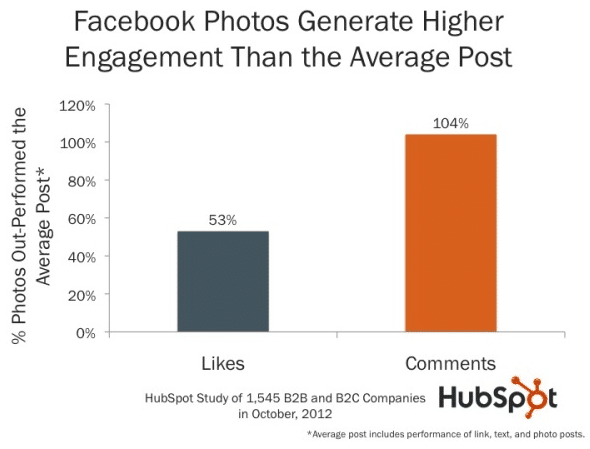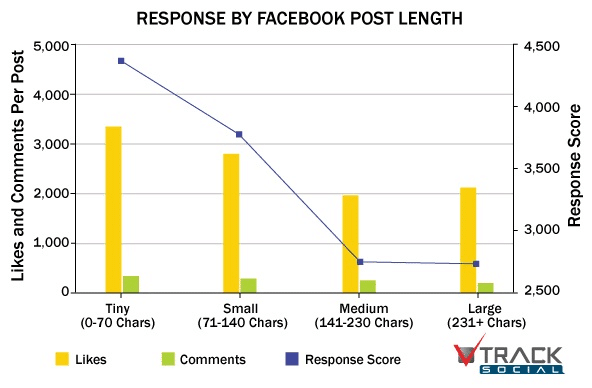8 Tips on Creating The PERFECT Facebook Post
We can all agree…..Social media is a great way to promote your business.
For example, you can promote your blog posts, guides, and other content on social media to drive people to your website, consequently acquainting them to your brand and, hopefully, swaying them to become a loyal customer.
However, crafting the right post requires some skill. Some social media practices are better than others.
In fact, some social media practices harm your social media campaigns.
For example, did you know that using hashtags on Facebook is a grave fault? Did you know that posting stock photos on Facebook reduces your reach?
1. Avoid Hashtags
Using hashtags (#) and @ symbols on your Facebook posts will decrease your reach to approximately six percent of total fans. Facebook will penalize you for using these symbols because they’re often used in other social media platforms such as Twitter, one of Facebook’s competitors. Additionally, posts with hashtags and @ symbols indicate that they’re not original Facebook posts, that they likely exist in other social networks (which is what usually happens when you write one post for several social networks using a social media management system like Hootsuite). Because Facebook doesn’t want users to advertise other social media networks on its platform, it will penalize you by reducing your reach.
If you’re using scheduling services such as Hootsuite or MeetEdgar for your social media posts, make sure to write separate copies for each social network. For example, include hashtags and @ symbols on your Twitter copies (these symbols work well on Twitter) and create a different version without the hashtags and @ symbols on your Facebook posts.
2. Post Moderately
The more is sometimes not the merrier. This is especially true for Facebook posts. In the eyes of Facebook, posting often equals lesser quality posts. Facebook doesn’t reward frequency—it rewards engagement numbers. For example, posts with high engagement will rank high in its algorithm, resulting in a top spot on its news feed and higher reach. Inversely, posts with low engagement will have lower reach. Thus, it’s better to have fewer high-quality posts than numerous low-quality posts that don’t accrue engagement.
Posting moderately also avoids spammy posts. If you post often enough that your followers will perceive your efforts as spam, they can easily hide your posts or, worse, report it as spam. Once users do the latter action, Facebook reduces your page’s ranking.
3. Use Emojis (If Appropriate) ✍️👌
Statistics show that social media posts with emojis have higher engagement than social media posts without emojis. It has been found that emojis increase comments and shares by 33% and likes by 55%. Additionally, in an experiment by AdEspresso, the Facebook marketing partner found that ads with emojis performed better than ads without emojis. With these promising findings, perhaps it’s time that you add emojis to your copies. However, only use emojis if it’s appropriate for your brand’s image and for your post’s tone. Also, make sure to study your analytics (if you have access to it) to see if your posts with emojis do perform better than your posts without emojis. Some tactics may work for some and not for others.
4. Include a Photo in Your Posts
Statistics also show that posts with photos receive more engagement than posts without photos. According to Kissmetrics, posts with photos receive 53% more likes, 104% more comments, and 84% more click-throughs. It’s not hard to imagine why posts with more photos perform better: photos attract the audience’s eye and causes them to pause mid-scroll.

If you want to increase your reach with posts like these, upload photos that have never been uploaded to Facebook before, photos that are completely original, that don’t exist anywhere else (yes, that means no stock photos you find on the internet). This is important because Facebook checks the .EXIF data on your photo and rewards posts with original photos.
5. Write Shorter Posts
Shorter posts also receive more engagement. Statistics show that Facebook posts below 250 characters have 60% more engagement. If you reduce your copy to 80 characters or below, you can increase your engagement by another 66%.

It’s easy to imagine why shorter posts prevail. People on the internet (especially those on mobile who are on-the-go) are usually impatient and expect to consume information quickly and easily. If your posts are long, especially if they are long enough to be truncated, followers will unlikely read your posts through its entirety (if they will even read your post at all).
6. Post Valuable Content
If you’re a business and you’re managing your social media, think of your posts as answers to the question, “What’s in it for me.” Thus, post content that is valuable to your followers. For example, if you’re in the entertainment business, post content that entertains. This may be a funny article, an entertaining video, or a culturally relevant meme. If you’re in the marketing business, post content that are helpful to your followers, like certain posts on your blogs, guides, infographics, or other helpful resources.
7. Include CTAs in Your Post
As mentioned in point number two, posts with low engagement will have lower reach. If pages consistently have low engagement, it will receive a low ranking by Facebook, consequently lowering its chances of getting the top spot on the news feed. To increase your engagement, you can combine tactics number three, four, five, and six listed in this post. However, you can also increase your engagement by adding a CTA (call-to-action) on your copy. CTAs let followers know what you want them to do after reading your post. For example, you can ask them to comment on your post, like, or share to friends. Adding a CTA to your copies can improve your engagement. After all, the age old adage sometimes rings true: ask and thou shalt receive.
8. Post at the Right Time
It’s important that you post at a time when your followers are online and your competition is low. To know the best times to post on Facebook, consult your insights (if you have access to this) and compare your data. For example, data may show that your posts have a higher engagement at 1 p.m. on the weekdays. It may also show that views spike on the weekends at 10 p.m. You can also try creating a poll that asks followers which times of the day they are most often browsing on Facebook. Although the best times to post can only be known by analyzing your insights, some social media experts like Vincent Dignan advise on posting three times a day: in the morning, in the afternoon, and in the evening.
Running a social media campaign requires skill and effective tactics. When posting on Facebook, it’s important that you avoid hashtags, post moderately, liven your copies with emojis if appropriate, include original photos, write shorter copy, include CTAs on your post, and post at the right time. If you want to improve your social media campaign, use one, two, three, or all of the advice listed in this post. You now have valuable social media knowledge. It’s time to use it.



